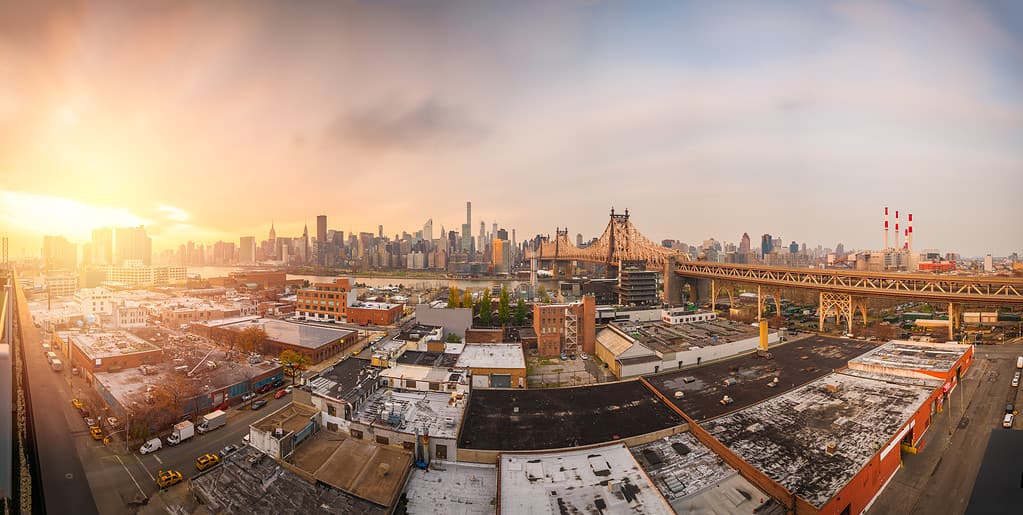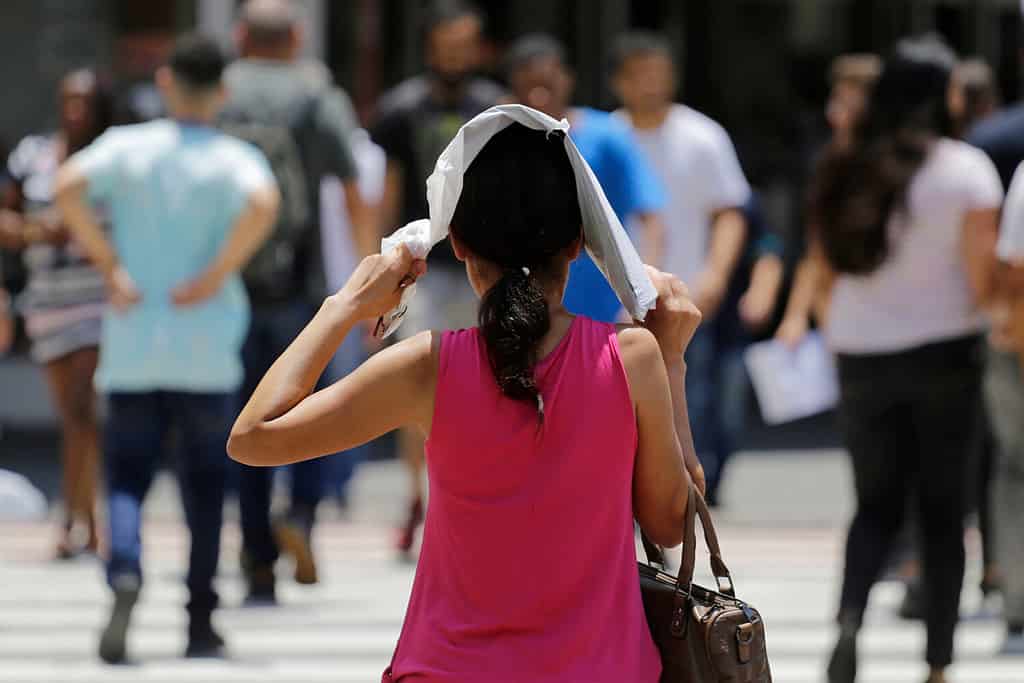Summer heat can be intense, but it can be even more uncomfortable for those living in a city. The structural configurations, as well as the materials used in cities, create heat islands, which can make extreme temperatures unbearable. New York City’s vast concrete expanses gather and radiate heat, amplifying the effects of the summer sun. Queens County, which consists of the entirety of the borough of Queens, NY, is nestled within the heat island that is New York City. Read on to discover the highest temperature ever recorded in Queens County.
Historical Temperature Trends in Queens County

What is the highest temperature ever recorded in Queens County, New York?
©Sean Pavone/Shutterstock.com
Queens County is one of New York City’s five boroughs and shares its climate history. The city experiences hot and humid summers, as well as cold and wet winters. Additionally, precipitation is high every year. Rain is common, and snowfall can be substantial, though infrequent. New York City’s location on the coast can sometimes cause high winds as well as high humidity. Average high temperatures in Queens Run from 39.5℉ (4.2℃) in January to 84.9℉ (29.4℃) in July.
Highest Temperature Recorded in Queens County
The highest temperature on record for Queens County is 107℉ (42℃), recorded on July 3, 1966, at LaGuardia Airport. Interestingly, this is higher than the official high temperature for all of New York City, recorded in Central Park during the Dust Bowl (106℉ on July 9, 1936). This is because the LaGuardia weather station did not exist in 1936. There is a good chance that the temperature that year exceeded the 1966 temperature—LaGuardia typically registers higher temperatures than Central Park.
The heat wave in 1966 began at the end of June and impacted the entire eastern portion of the U.S., starting in the Northeast and spreading to the south and west. Temperatures soared from the Northeast to the Great Lakes and the Great Plains. Huron, South Dakota, reached 112℉ (44.4℃) on July 10. In St. Louis, MO, 246 death certificates listed heat as July’s primary cause of death.
Impact on the People of Queens County

As temperatures in an urban community like Queens County reach extremes, residents try innovative ways to adapt.
©Nelson Antoine/Shutterstock.com
In Queens, people sweltered in their apartments, but many headed out to the public pool in Astoria, where there was a wait of up to two hours. Many people who tried to make their way to the beaches were stuck in traffic jams caused by road conditions and overheated cars. One driver stopped his car, took off his shirt and pants, and resumed driving in swimming trunks. Firefighters were hit with rocks when they went to shut off a hydrant that had been opened to provide respite for overheated residents. People desperate to cool off were susceptible to scams and bait-and-switch tactics from unscrupulous air conditioning salesmen.
Not everybody felt the heat, though. Michael Scarpa, a forecaster for the Weather Bureau, sat in his comfortable 71℉ Rockefeller Center office while he received the Central Park numbers by phone.
Impacts on the Infrastructure of Queens County
Hundreds of cars overheated along the bridges and highways. This just added to the difficulties that were already occurring with the roads. The pavement buckled from the heat, and drawbridges expanded so they could not open. One drawbridge opened slightly to allow for a sailboat to pass and then could not be closed, effectively closing to traffic. Officials closed many other roads due to damage from the heat. The heat also warped railroad tracks. Finally, the local water reservoirs saw levels fall quickly over those 24 hours, with 600 million gallons being used.
Government Preparedness for Heat Emergencies

Heading for the beaches in July is one way people deal with the heat.
©Drop of Light/Shutterstock.com
How is Queens prepared to handle heat emergencies now? That burden falls to the City of New York, as it is the controlling governmental entity. Of course, education is critical, and New York City provides an emergency preparedness page for heat events.
However, some vulnerable populations within the city may not have the awareness or agency to handle these situations on their own. New Yorkers are urged to look out for their neighbors to protect these populations. In addition, the city provides many publicly available services, from assistance to secure air conditioners to the availability of cooling centers throughout the city. NYC also installs spray caps on fire hydrants in designated streets with tree canopy cover.
With climate change looming, local governments like New York City must be proactive when handling heat emergencies for their citizens. They appear to be making strides and are aware of the city’s tendency to become a heat island.
The photo featured at the top of this post is © Ed Connor/Shutterstock.com
Thank you for reading! Have some feedback for us? Contact the AZ Animals editorial team.






